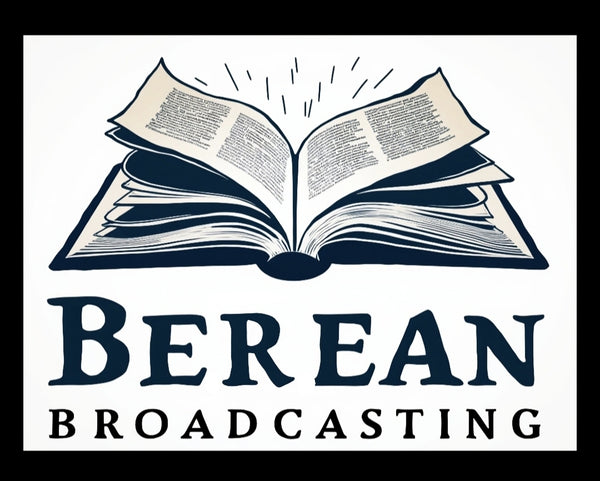Hebrews 9
Share
Hebrews 9, part of the epistle to the Hebrews, written around AD 60–68, likely before the Jerusalem temple’s destruction, contrasts the old covenant’s tabernacle and sacrifices with the superior, once-for-all sacrifice of Christ. The author explains how Christ’s blood cleanses consciences and secures eternal redemption, establishing the new covenant and surpassing the temporary atonement of the old system.
Key Sections
Old Covenant’s Tabernacle and Rituals (9:1–10): The first covenant had earthly regulations, with a tabernacle containing the Holy Place (lampstand, table, bread) and Most Holy Place (ark, cherubim, mercy seat). Priests entered the first area regularly, but only the high priest entered the second yearly on the Day of Atonement, with blood for sins. These were symbolic, unable to perfect consciences, serving as temporary rituals until the time of reformation.
Christ’s Superior Sacrifice (9:11–14): Christ, as high priest of better things, entered the heavenly tabernacle with His own blood, not animal blood, securing eternal redemption. Unlike goats’ and calves’ blood, which purified externally, Christ’s blood, offered through the eternal Spirit, cleanses consciences from dead works to serve the living God.
Mediator of the New Covenant (9:15–22): Christ’s death mediates the new covenant, redeeming old covenant transgressions and promising eternal inheritance. Like a will, His death activates the covenant, requiring blood, as the law showed—blood purified nearly everything, and without it, there’s no forgiveness.
Once-for-All Offering (9:23–28): Heavenly things needed better sacrifices than earthly copies. Christ entered heaven itself, not a man-made sanctuary, appearing once to put away sin by His sacrifice. Unlike priests offering repeated sacrifices, He’ll return not for sin but to save those awaiting Him, having borne sin once, as humans die once and face judgment.
Cross-References
Tabernacle Rituals:
Exodus 25:10–40: Tabernacle details.
Leviticus 16:14–16: Day of Atonement.
Numbers 19:2–9: Ashes of heifer.
Temporary Nature:
Hebrews 10:1–4: Shadows, not reality.
Galatians 3:24: Law as guardian.
Colossians 2:16–17: Shadows of Christ.
Christ’s Blood:
1 Peter 1:18–19: Precious blood.
Ephesians 1:7: Redemption through blood.
Revelation 1:5: Washed in blood.
New Covenant:
Jeremiah 31:31–34: New covenant promise.
Luke 22:20: Blood of covenant.
Hebrews 8:6–13: Better covenant.
Blood’s Necessity:
Leviticus 17:11: Life in blood.
Romans 5:9: Justified by blood.
Exodus 24:8: Covenant blood.
Once-for-All:
Hebrews 7:27: Offered once.
Romans 6:10: Died once for all.
1 Peter 3:18: Suffered once.
Christ’s Return:
Titus 2:13: Blessed hope.
Acts 1:11: Return in glory.
Philippians 3:20: Await Savior.
Theological Meaning
Old Covenant’s Limits: Earthly rituals were symbolic, unable to fully cleanse or perfect (9:9–10; Romans 3:20).
Christ’s Superiority: His blood secures eternal redemption, entering heaven itself (9:12; Ephesians 1:3–4).
Cleansed Conscience: Christ’s sacrifice enables true worship, freeing from guilt (9:14; 1 John 1:7).
New Covenant’s Promise: Christ’s death fulfills and surpasses the law, granting eternal inheritance (9:15; Galatians 4:4–7).
Blood’s Role: Forgiveness requires blood, fulfilled perfectly in Christ (9:22; Colossians 1:20).
Eschatological Hope: Christ’s finished work assures His return for salvation, not judgment (9:28; 1 Thessalonians 1:10).
Questions and Answers
Why describe the tabernacle (9:1–5)?
To show its earthly, temporary nature, contrasting with Christ’s heavenly work (9:1; Exodus 26:1–37).
What couldn’t old sacrifices do (9:9)?
Perfect consciences, only addressing external purity (9:9; Hebrews 10:2–4).
How does Christ’s blood differ (9:14)?
It cleanses consciences internally, enabling worship, unlike animal blood’s external effect (9:14; Romans 5:11).
Why is Christ a mediator (9:15)?
His death activates the new covenant, redeeming sins and securing inheritance (9:15; Hebrews 12:24).
Why blood for forgiveness (9:22)?
Blood, representing life, was required for atonement, fulfilled by Christ (9:22; Leviticus 17:11).
What is Christ’s second appearing (9:28)?
His return to save believers, not to address sin, already resolved (9:28; Revelation 22:12).
How does this apply today?
Trust Christ’s finished sacrifice, worship freely, and await His return (9:14; Colossians 2:17).
Additional Notes for Readers
Historical Context: Written to Jewish Christians, possibly in Rome or Jerusalem (Hebrews 13:24), facing persecution and tempted to revert to Judaism (Hebrews 10:32–34). The temple’s operation (9:6–8) suggests a pre-AD 70 date. Tabernacle details (9:2–5) resonated with their Jewish heritage, emphasizing Christ’s fulfillment.
Cultural Questions: “Tabernacle” (9:1) recalls Jewish wilderness worship, vivid for Hebrews’ audience (Exodus 25:8–9). “Day of Atonement” (9:7) was central to Jewish life, underscoring its limits (Leviticus 16:30). “Conscience” (9:9) uses Greco-Roman moral terms, relatable in urban centers (Acts 24:16). “Will” (9:16–17) employs Greco-Roman legal imagery, clear in Roman-ruled areas (Galatians 3:15). “Heaven itself” (9:24) contrasts with Jerusalem’s temple, bold for Hebrews (John 4:21–24). “Judgment” (9:27) echoes Jewish eschatology, urgent in persecution (Ecclesiastes 12:14).
Application: Hebrews 9 calls believers to rely on Christ’s perfect sacrifice, live with cleansed consciences, and hope in His return. It challenges reliance on rituals, guilt, or fear, urging confident worship in the new covenant in a world of uncertainty (Romans 12:1; 1 Peter 2:5).
